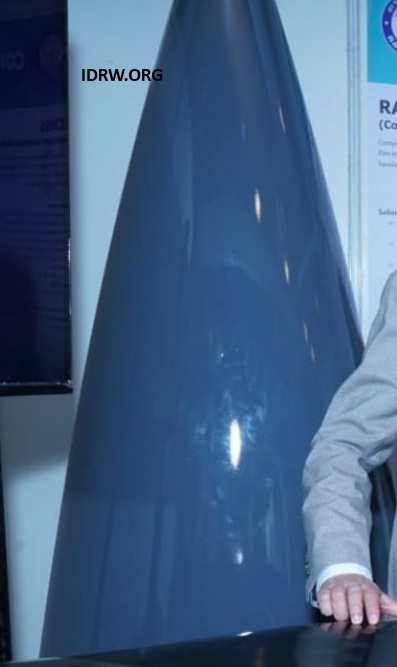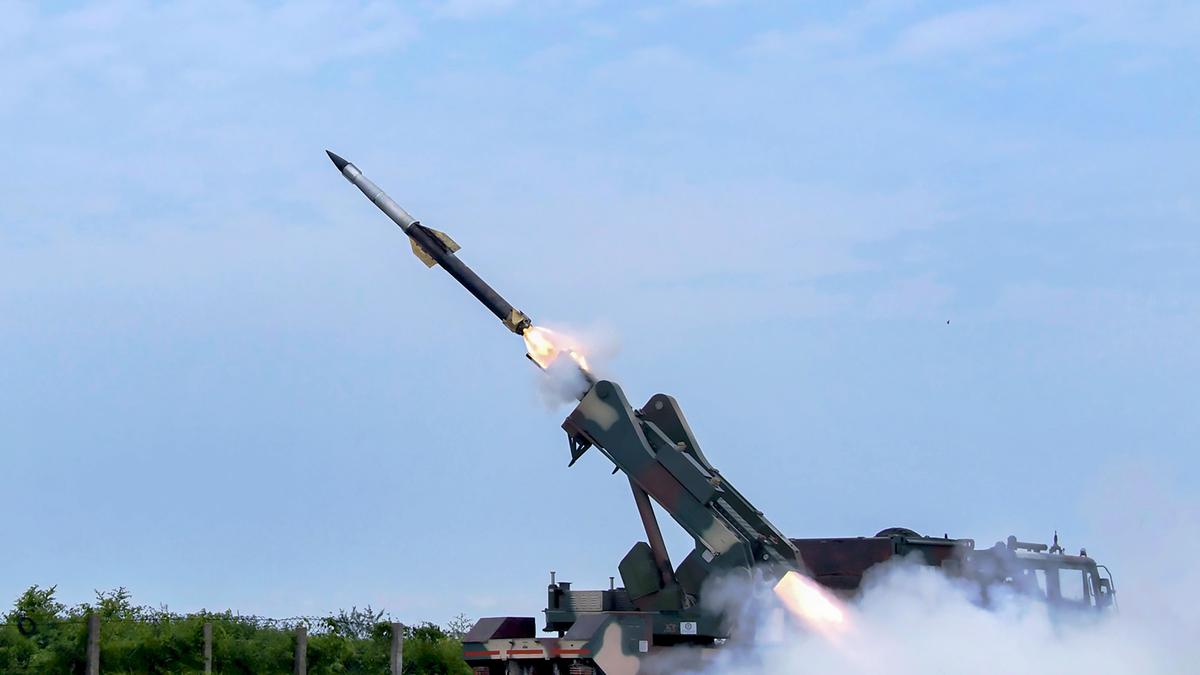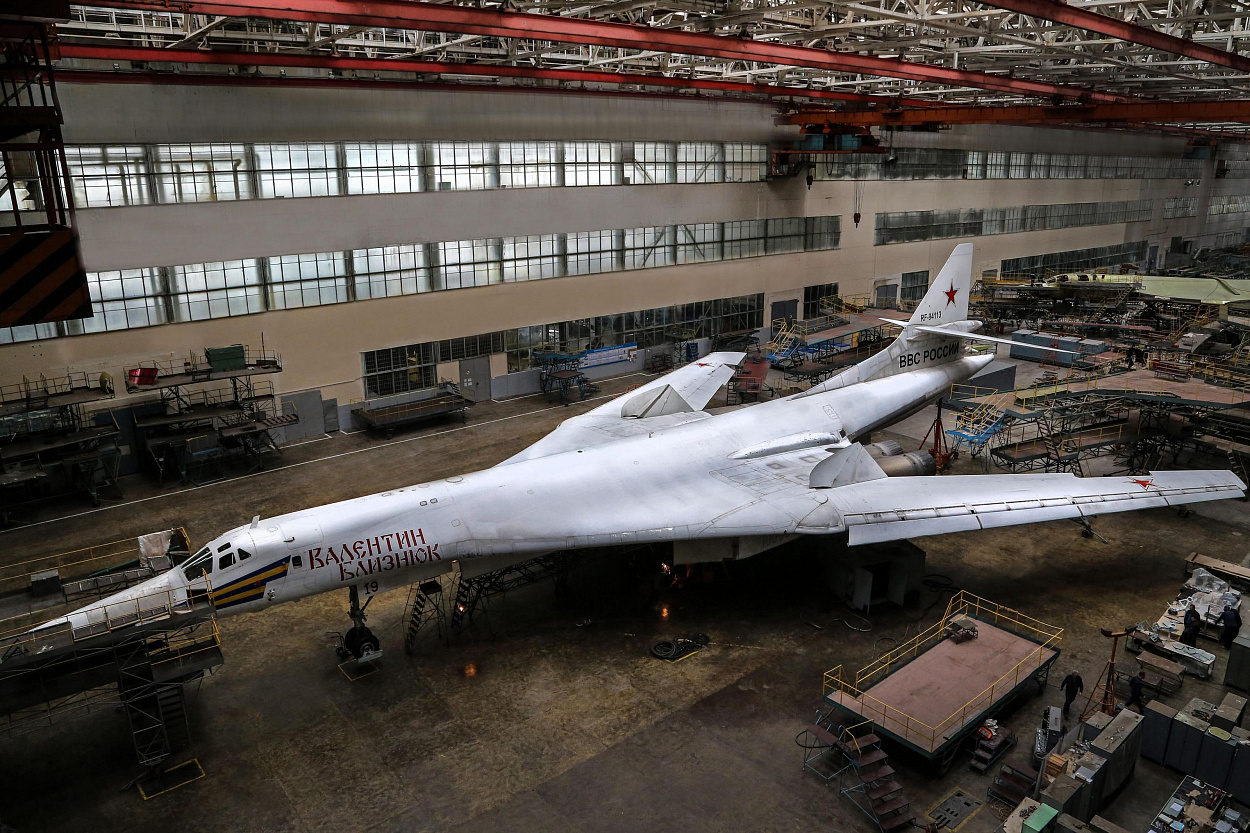admin
SOURCE: AFI


The Indian Army’s air defense capabilities have long included the venerable ZSU-23-2, a Soviet-designed, twin-barreled, 23mm anti-aircraft autocannon system. Originally a towed gun, recent developments and discussions within military circles have focused on converting this system into a light, self-propelled air defense (AD) platform for the Indian Army’s air defense regiments. This transformation aims to enhance mobility, responsiveness, and effectiveness against contemporary aerial threats like drones and low-flying aircraft.
The primary advantage of converting the ZSU-23-2 into a self-propelled system is the increase in mobility. A self-propelled version can rapidly reposition on the battlefield, providing a more dynamic defense against aerial threats.
Continue readingSOURCE: AFI


The Indian Navy has taken a significant step forward in bolstering its aerial combat capabilities by officially integrating the Israeli-manufactured Rampage air-to-surface missile into its MiG-29K fighter jets. This move underscores India’s commitment to enhancing its defense infrastructure amid escalating regional security concerns and highlights the enduring technological collaboration between India and Israel.
The Rampage missile, developed by Israel Aerospace Industries (IAI) and IMI Systems, boasts an impressive operational range of 250 kilometres and travels at supersonic speeds. This capability allows the MiG-29Ks to strike high-value targets from distances well beyond the reach of most enemy air defence systems, thereby offering a substantial strategic advantage. The missile’s integration into the naval fleet serves multiple objectives.
Continue readingSOURCE: AFI


Sagar Defence Engineering Pvt. Ltd. has announced a significant milestone in its journey towards global recognition in the field of autonomous systems. The company has successfully secured patent acceptance in Japan for its proprietary invention titled “Method and System for Locating a Drone Box for Landing and Charging a Drone.” This patent, identified by number 7616699, marks a pivotal step in expanding the reach of indigenously developed technology into international markets.
The patented method and system are designed to revolutionize the way drones are managed in terms of precision landing and automated charging. This technology ensures that drones can autonomously navigate to specific docking stations, or “drone boxes,” for recharging, thereby enhancing the operational efficiency and autonomy of drone fleets. This innovation is particularly crucial for applications in surveillance, logistics, and emergency services where uninterrupted operation is paramount.
Continue readingSOURCE: RAUNAK KUNDE / NEWS BEAT / IDRW.ORG


The Indian Air Force’s (IAF) ambition to bolster its fleet through the Multi-Role Fighter Aircraft (MRFA) tender might see a significant increase in costs due to Dassault Aviation’s transition to the Rafale F4 configuration. A Ministry of Defence (MoD) official has hinted to idrw.org that the capital cost for procuring 110 Rafale jets could rise substantially if the IAF opts for this advanced variant with technology transfer (ToT).
The benchmark for this projection can be traced back to the UAE’s deal for 80 Rafale jets, which was valued at $16 billion. Adjusting for a 5% annual inflation rate over the last four years, this equates to approximately $17.6 billion in today’s terms. However, India’s plan to acquire 110 jets, coupled with the costs associated with ToT, suggests a potential price tag nearing $27 billion.
Continue readingSOURCE: RAUNAK KUNDE / NEWS BEAT / IDRW.ORG


In a significant milestone for India’s indigenous aerospace development, the Defence Research and Development Organisation (DRDO) recently showcased the first of its kind composite nose cone developed for the Tejas MkII program. The event, held in Pune, was graced by the presence of the DRDO Chief, marking a proud moment for India’s defense technology sector.
The newly developed nose cone, or Radome, has been meticulously crafted to meet the rigorous demands of modern aerial combat. A sneak peek at the project confirmed that the Radome employs high-purity quartz, which is known for its ideal structural reinforcement capabilities in high-performance composite materials. This choice of material underscores the radome’s exceptional strength-to-weight ratio and its ability to minimize electromagnetic interference (EMI), critical for the performance of onboard avionics.
Continue readingSOURCE: RAUNAK KUNDE / NEWS BEAT / IDRW.ORG


Manoj Jain, the Chairman and Managing Director of Bharat Electronics Limited (BEL), a Navratna Defence Public Sector Undertaking, has expressed optimism regarding the finalization of a significant Rs 25,000 crore deal for the Quick Reaction Surface to Air Missile (QRSAM) system. The deal is expected to be concluded within the next 8 months to one year, aiming for an end date before March 26, 2026.
This announcement comes at a pivotal time for the QRSAM program, which has been under scrutiny for its performance and reliability. Back in 2023, it was reported that the system needed further testing in 2024 to enhance mission reliability and address some technical glitches. The Defence Research and Development Organisation (DRDO), responsible for the missile’s development, had conducted tests in what was described as the final deployment configuration. This configuration included all indigenously-developed sub-systems like the missile with an indigenous Radio Frequency (RF) seeker, mobile launcher, a fully automated command and control system, as well as surveillance and multi-function radars.
Continue readingSOURCE: AFI


Bharat Electronics Limited (BEL) has recently delivered a groundbreaking VHF radar system to the Indian Armed Forces, marking a significant advancement in the nation’s air defence capabilities. This new radar, equipped with an Active Electronically Scanned Array (AESA) antenna, is specifically engineered to detect and track low-observable (stealth) aircraft at ranges up to 200 kilometres, providing critical early warning against stealth threats like China’s J-20 or the J-35A, which Pakistan is reportedly planning to acquire.
Stealth technology primarily works by reducing an aircraft’s radar cross-section (RCS) in higher frequency bands like X-band, where most modern air defense radars operate. However, VHF radars use much longer wavelengths (typically 1 to 3 meters), which interact with the aircraft’s structure differently. Due to Rayleigh scattering, where electromagnetic waves scatter more from objects smaller than their wavelength, stealth aircraft features that are effective against shorter wavelengths become less so against VHF frequencies. This means that even stealth jets with reduced RCS can produce a detectable return when hit by VHF radar waves.
Continue readingSOURCE: AFI


In a significant stride towards enhancing India’s defense capabilities, ideaForge Technology Limited has proudly announced that its SWITCH MINI UAV was featured in the Integrated Battlefield Surveillance System ‘Sanjay’. This system, a collaborative effort between the Indian Army and Bharat Electronics Limited (BEL), represents a leap forward in modern warfare technology.
The SWITCH MINI UAV, known for its agility, endurance, and high-altitude performance, has been certified as ‘Fit for Indian Military Use’, a testament to its reliability and effectiveness in real-world combat scenarios. During the recent Republic Day parade, the UAV was showcased as an integral part of the ‘Sanjay’ system, demonstrating its role in providing advanced surveillance, reconnaissance, and tactical support.
Continue readingSOURCE: AFI


In a significant move to enhance the surveillance capabilities of the Indian Army, the Ministry of Defence has signed contracts with RRP S4E, a leading supplier of optical and thermal imaging technology. The agreements, totaling $11.6 million, will see the supply of long-range cameras and thermal imaging sights designed to boost the operational effectiveness of ground forces in both day and night conditions.
Viraj 28-B Camera is state-of-the-art long-range observation system weighs less than 9 kg and integrates a day camera with a thermal imaging sensor. The day camera boasts Full High-Definition (HD) 1080p resolution, offering a 30x optical zoom and 16x digital zoom for detailed surveillance. Its companion thermal imaging sensor, with a resolution of 640×480p and 6x optical zoom, allows for effective target acquisition in low visibility or night conditions. The Viraj 28-B can detect, recognize, and identify a person at distances of up to 4 km, 1.3 km, and 678 meters, respectively.
Continue readingSOURCE: AFI


In a significant move towards advancing the electric vertical take-off and landing (eVTOL) sector in India, auto component manufacturer Sona BLW Precision Forgings Ltd has inked a memorandum of understanding (MoU) with Ubifly Technologies Private Limited, known as The ePlane Co., on January 29, 2025. This collaboration aims to innovate and develop powertrain solutions for eVTOL aircraft and drones.
The ePlane Co. stands out as a trailblazer in the eVTOL industry, focusing on applications ranging from air ambulances and charter flights to aerial cargo solutions. Their recent achievement of receiving type approval from the Directorate General of Civil Aviation (DGCA) highlights their position as a leading indigenous private entity in this niche market.
Continue readingSOURCE: IDRW.ORG


A significant report by the French think tank, the French Institute of International Relations (Ifri), titled “The Future of Air Superiority: Mastering the Skies in High Intensity,” has cast a spotlight on the limitations of the French model, particularly the Rafale fighter jet, in contemporary high-intensity warfare scenarios. Authored by two experts from the French Air and Space Forces, the 114-page document was highlighted by the French media outlet L’Opinion.
The report suggests that the “French model is reaching its limits” when it comes to functioning effectively within a coalition in high-intensity conflicts. French pilots flying Rafale jets have encountered significant difficulties when pitted against fifth-generation fighters like the American F-35 in exercises. The report points out that “the combat mission against stealth fighters is impossible to win with the current state of the sensors.”
Continue readingSOURCE: IDRW.ORG


In a strategic move that could significantly enhance India’s air force capabilities, French aerospace company Safran has expressed its readiness to develop a high-thrust 110kN engine for India’s Advanced Medium Combat Aircraft (AMCA) program. More intriguingly, Safran has proposed that this new engine could also be retrofitted into India’s existing and future Rafale fleets, promising substantial performance upgrades.
Safran’s proposal comes with the assurance that the dimensions of the new 110kN engine will be similar to the current M-88 engines that power the Rafale jets. This compatibility means that the Indian Air Force (IAF) and the Indian Navy would not require major modifications to the airframe or the engine bay of the Rafale to accommodate the new powerplant. This aspect is particularly appealing as it bypasses the need for extensive redesign or structural changes, thereby keeping costs down and maintenance straightforward.
Continue readingSOURCE: AFI

The Gas Turbine Research Establishment (GTRE), an integral part of India’s Defence Research and Development Organisation (DRDO), currently boasts a workforce of 227 employees dedicated to the advancement of gas turbine technology. With the ambitious Advanced Medium Combat Aircraft (AMCA) engine program on the horizon, GTRE is preparing for a significant recruitment push.
The AMCA project, central to India’s fifth-generation fighter jet aspirations, has been a focal point for technological self-reliance in aerospace engineering. GTRE’s role in this project is to develop an indigenous high-thrust engine, which is expected to be a collaboration with a foreign contractor. The specifics of this collaboration are still under negotiation, but the anticipation is high, with potential partners including global giants like Safran, Rolls-Royce, and General Electric.
Continue readingSOURCE: AFI


The realm of aerospace technology, particularly the development and enhancement of fighter jets, is an arena where nations often push the boundaries of innovation. Reverse engineering has historically been a method employed by various countries to leapfrog technological gaps and bolster their military capabilities. However, India’s approach to reverse engineering fighter jets has been notably cautious, shaped by both its capabilities and its commitment to international Intellectual Property Rights (IPR) laws.
Modern fighter jets are complex systems integrating advanced materials, aerodynamics, avionics, and propulsion technologies. The process of reverse engineering such sophisticated equipment requires not just access to the hardware but also deep expertise in multiple engineering disciplines. India has made significant strides in indigenous aircraft development, like the Tejas Light Combat Aircraft, but the journey from reverse engineering to full indigenous production has been fraught with challenges. The technical intricacies of jet engines, avionics, and stealth technology, for instance, have proven particularly difficult to master through reverse engineering alone.
Continue readingSOURCE: AFI


In the realm of global military aviation, only a select few nations possess fleets of strategic bombers (SB), which are designed for long-range, deep-penetration strikes into enemy territory. Currently, these nations are the United States, Russia, and China. Notably, India, despite its significant military prowess and strategic interests, particularly in light of the regional dynamics with China, has not ventured into this domain.
India’s military doctrine has historically prioritized regional defense rather than global power projection, which strategic bombers would serve. The Indian Air Force (IAF) has focused on multi-role fighters that can handle a variety of missions from air superiority to ground attack, aligning with India’s defense needs against its immediate neighbors. The acquisition of strategic bombers would represent a significant doctrinal shift, requiring not only a change in military strategy but also substantial financial investment. Strategic bombers are expensive to acquire, operate, and maintain, and with India’s defense budget stretched across multiple modernization programs, the cost-benefit analysis has so far not favored such a move.
Continue reading